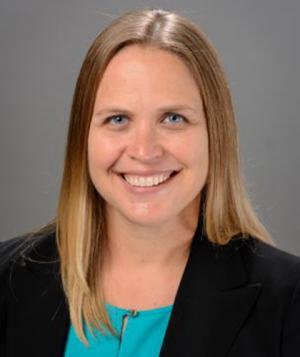Enabling Parents, Professionals to Monitor Children’s Brain Development
At a typical pediatric visit, parents are given information about their child’s height and weight, compared to that of other children, and are often shown a scale of their child’s growth on a national curve.
Professor Tracy Riggins of the Department of Psychology in the College of Behavioral and Social Sciences, along with Professors Brenda Jones Harden and Nathan Fox of the Department of Human Development and Quantitative Methodology in the College of Education, are part of a team of UMD researchers and collaborators who are working to create a future where pediatricians—and other medical professionals and researchers—can also track and share information about a child’s brain development.

They are working with the National Institutes of Health to continue building, and now sharing, the NIH Brain Development Cohorts (NBDC) Data Hub. The NBDC Data Hub is open for the first time to researchers worldwide, who must apply for access and abide by rigorous research and ethical protocols. Once approved, researchers will have access to rich, longitudinal brain, behavior and genomic data gathered from two ongoing studies, the Adolescent Brain Cognitive Development (ABCD) Study, and the HEALthy Brain and Child Development (HBCD) study.
Once researchers have access to this dataset, they could potentially use it to study an unlimited range of topics related to children’s brains and behaviors, from autism spectrum disorder to mental health conditions to memory and language development.
“This dataset is unprecedented. The scientific community does not yet have anything like this in terms of the growth chart of the brain. We are gathering and sharing knowledge about the typically developing brain; that is one of the major goals of this huge initiative,” Riggins said.

“With the combination of the HBCD study—which begins in pregnancy and goes to age 8, and the ABCD, which starts at 8 and goes through adolescence—researchers will have an extraordinary set of data about brain and behavioral development,” Fox said.
HBCD’s final sample will include about 7,000 parent and child dyads. These current and future families are helping to provide brain scans and information that could help countless researchers around the world to learn more about brain development of the same participants from birth through the early teen years.
“A major goal of the study is to examine the impact of exposure to various aspects of the environment—including prenatal substance use, environmental pollutants, and parental stress—on children’s brains and behaviors. We’re also paying attention to a range of demographic factors, from race and ethnicity to where a family lives to income,” Jones Harden said, noting that the researchers are dedicated to making the study as comprehensive as possible.
Ultimately, the data do not belong to any one researcher or university; NBDC is an open resource that Jones Harden said could potentially inform federal and state policies about children and families, from services to address children’s developmental needs to programs for families who experience adversities.
“This is such a good use of federal funding, because knowing more about the brain can potentially benefit absolutely everyone. No one researcher or university could collect data like this, in such a comprehensive way, and distribute it in such a fair manner in which people can use this data to address so many different questions about the brain and the body,” Riggins said. “For example, I study a very small part of the brain, the hippocampus. But the same information I will use for my work will benefit researchers in other places who study different parts of the brain, different brain functions. We can all use the same data set, but ask different questions with it.”
Riggins said that in order for this innovative project to continue growing, she and her colleagues are eager to recruit more participants. The study currently works with participants who speak primarily English and participants who speak primarily Spanish.

Because infants and their families are participating, the UMD team is finding supportive ways to work with them.
From having items to share with families from a “resource closet,” to putting up families in hotels for a night to facilitate MRI scans done when a child is sleeping, to helping an expecting mother secure care for her older children when she went into labor, the team recognizes that working with expecting families and families with small children can sometimes necessitate extra care and support.
To learn more about the study, families can visit hbcdstudy.org. There, they can watch a video about the “HBCD experience,” and potentially sign up to participate via https://hbcdstudy.org/participate-in-hbcd-study.
“We’re connecting with expecting parents early on, to answer questions and make them comfortable and help them through the enrollment process during their second trimester,” Jones Harden said. “The study is very family-friendly.”
As more and more families participate, the researchers will be able to share even more data openly with their colleagues from around the world. Riggins said that there is already a lot of interest in applying to access and use the data, in part because there is no data set like it in the world.
“The potential for what researchers could learn about the human brain, and human behavior, from this project—it’s limitless,” Riggins said.
Main story image via iStock
Published on Thu, 07/31/2025 - 11:39


